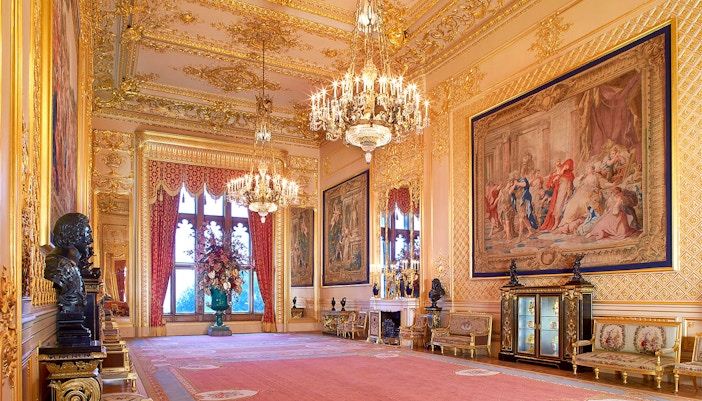Address: Windsor SL4 1NJ, United Kingdom | Find on Maps
Windsor Castle is in the picturesque town of Windsor, Berkshire, in southeastern England.
Nearest train station: Windsor & Eton Central (373 m away)
Landmarks nearby: River Thames
Windsor Castle is a nearly 1,000-year-old royal residence in Berkshire, England. Founded by William the Conqueror, it's the world's largest inhabited castle and remains an active home for the British Royal Family. Its historical significance is im...
Founded On
1824
Founded By
Jeffry Wyatville, Hugh May, Edward Blore, Anthony Salvin, Giles Downes, and Henry Emlyn

ADDRESS
Windsor SL4 1NJ, UK
RECOMMENDED DURATION
2 hours
Timings
Closed today
VISITORS PER YEAR
1500000
TICKETS
From $41.50
EXPECTED WAIT TIME - STANDARD
30-60 mins (Peak), 0-30 mins (Off Peak)
EXPECTED WAIT TIME - SKIP THE LINE
0-30 mins (Peak), 0-30 mins (Off Peak)
UNESCO YEAR
1991
The royal family’s former name used to be Saxe-Coburg-Gotha. In 1919, the royal family adopted the name Windsor, inspired by the castle.
More than 10 monarchs have been buried in Windsor Castle, including Charles I, Edward IV, Henry VIII, and Queen Elizabeth II.
During World War II, the royals hid at Windsor instead of Buckingham Palace. The young princesses, including the future Queen Elizabeth II, had to sleep in the dungeon.
Windsor Castle Entry Tickets
From London: Windsor Castle Half-Day Tour
From London: Stonehenge, Windsor & Oxford Day Trip
From London: Stonehenge, Windsor Castle & Bath Day Trip






Following the Norman conquest of 1066, William the Conqueror built the first wooden fortress on the site. Between 1165 and 1179, Henry II expanded the castle and constructed the first stone castle. However, it wasn't until Edward III began expansion that Windsor became the grand royal residence that we know today. In 1475, his successor, Edward IV, commissioned the construction of St. George’s Chapel. Over the years, several monarchs commissioned the rebuilding of the castle, predominantly in Baroque and Gothic styles.
At the beginning of WWII, the royal family shifted to Buckingham Palace. Today, Windsor Castle remains an official residence of the British monarch, attracting visitors from all over.



Windsor Castle is open from 10am to 4:15pm in winter and till 5:15pm in the summer from Thursday to Monday. The best time to visit the castle is from May to September. However, be aware that these months are also the busiest. Try to visit during weekdays to avoid weekend crowds.
The best way to get to the castle is by booking a day trip from London to Windsor Castle. This saves you the trouble of arranging transport. You can even take a guided tour of attractions like Stonehenge, Oxford, or Bath. If you're choosing public transport, take the train. Get down at Windsor & Eton Central, which is just 373m away from the castle.
No royal members live at Windsor Castle now except the staff. After Queen Elizabeth II's passing, King Charles inherited the castle. It is likely that Prince William and Kate Middleton will move into it.
Although Windsor Castle is much smaller than Buckingham Palace in London, it has more rooms. While Buckingham Palace has 775 rooms, Windsor Castle has just over 1,000 rooms. That's about 52 royal and guest bedrooms, 92 offices, and 78 bathrooms.
The original wooden castle was built around 1070 and took over 16 years to complete. However, succeeding rulers expanded and renovated it several times over the years, with the last round of renovations after the fire in 1992.
The Windsor Castle is completely open to the public. The castle or the State Apartments are only closed to the public when royalty is in the house or during special events when the castle is functioning as a working palace.
Photography is not allowed in St George’s Chapel and the State Apartments. However, you are free to click photos outside the castle premises.
There is no strict dress code to follow when visiting Windsor Castle, but we encourage you to wear smart daywear. Given the attraction’s significance and the weather, wear respectable and modest clothing. Avoid shorts and flip-flops.
Yes, at the end of the tour, you can buy souvenirs and gifts, including books, decorations, stationery, and chocolates, at the Windsor Castle Shop.












